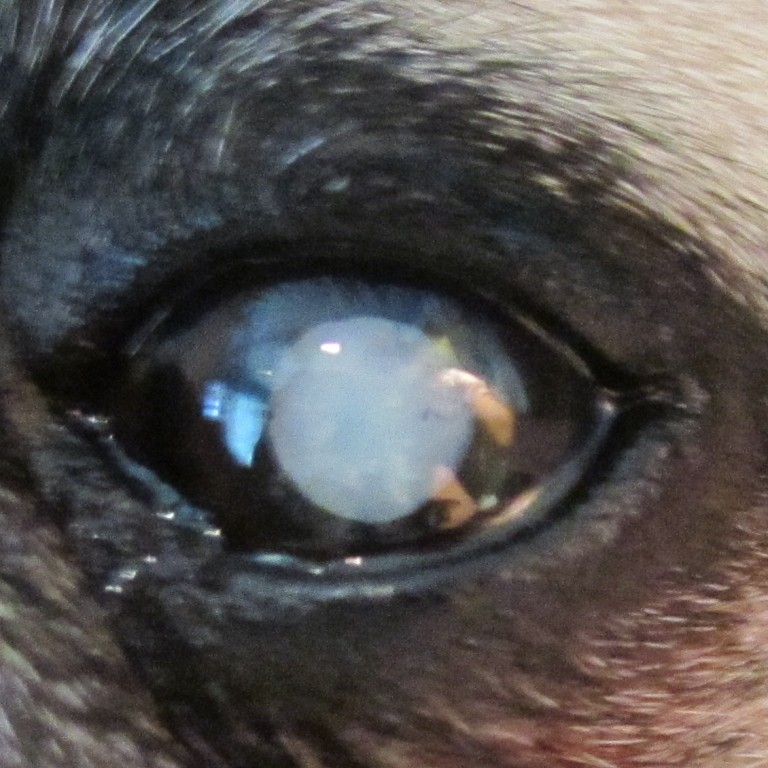
Eye drop tests on dogs offer hope of non-surgical cure for cataracts - one of Hong Kong’s leading causes of blindness
Researchers in Guangzhou hope eye drops tested on dogs will reduce the need for surgery
Eye drops rather than surgery could one day be used to cure cataracts, thanks to a breakthrough study by a mainland university.
Researchers at Sun Yat-sen University in Guangzhou found eye drops tested on dogs helped control a molecule that could lead to the common eye disease.
Dr Chow Pak-chin, president of Hong Kong's College of Ophthalmologists, called the research "a very significant breakthrough".
"If the research is successful, it means that cataract patients may no longer require surgery." Chow said.
The chain of research leading to the potential cure began with two children - patients of lead researcher Dr Zhang Kang - from families beset with an inherited form of the condition.
Zhang and colleagues discovered that his patients shared a mutation in a gene critical for producing the chemical compound lanosterol, which the researchers suspected might impede cataract-forming proteins from clumping in normal eyes.
In a first set of lab experiments on cells, they confirmed their hunch that lanosterol helped ward off the proteins.
In subsequent tests, dogs with naturally occurring cataracts received eye drops containing the molecule.
"Our study identifies lanosterol as a key molecule in the prevention of lens protein aggregation and points to a novel strategy for cataract prevention and treatment," the authors concluded.
Chow said the research "would turn the medical world upside down". He compared the finding to the discovery of , a bacterium found in the stomach leading to chronic gastric ulcers, which has since allowed patients to take pills to kill the bacteria instead of having to undergo an operation.
Around 14 per cent of Hongkongers between the ages of 36 and 45 have cataracts, according to a University of Hong Kong survey conducted in 2007.
Chow said he expected the prevalence rate for cataracts to increase rapidly in the coming decade as the population aged.
"By the age of 60, everyone will somehow suffer from a different degree of cataracts. It is a disease from which almost no one can escape," he said. "This is why the finding will have a huge impact for the medical world."
More than 54,000 people were waiting for cataract surgery in local public hospitals in 2009, according to the Hospital Authority. More than 42,000 were over 71. The average waiting time for cataract surgery is between eight and 23 months. The surgery costs about HK$18,000 in a private hospital.
J. Fielding Hejtmancik, a scientist at the US National Eye Institute, wrote in the journal that the findings were very preliminary and the scientists would probably test other molecules to see if they might be even better before moving forward to any human trials.
The preliminary results, he added, "doesn't mean that lanosterol is the only or the best compound" for reducing cataracts.


.png?itok=arIb17P0)